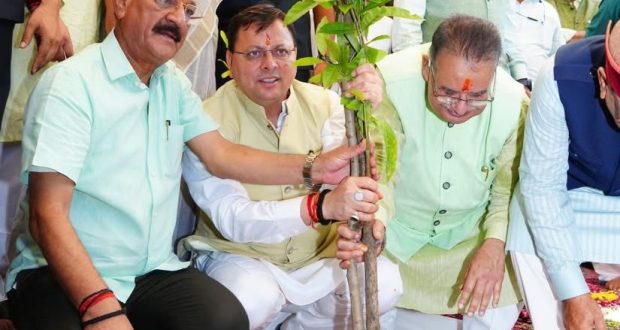DAINIK NATION BUREAU/DEHRADUN
On the occasion of Harela, Chief Minister Dhami initiated the campaign by planting a sapling in Dehradun. More importantly, he called on the citizens to treat this as a people’s movement, rather than a mere government-led initiative. The response was overwhelming. Plantation drives were held in every corner of Uttarakhand—from remote mountain villages to bustling urban areas. Participation spanned across schools, Anganwadi centers, local bodies, voluntary organizations, forest departments, women’s self-help groups, and youth groups.
As of now, over 8.13 lakh saplings have been planted across all 13 districts of the state, making it the largest plantation drive ever conducted in Uttarakhand on a single festival. This record-setting effort marks a shift in public consciousness, turning a cultural tradition into a movement for climate resilience and ecological restoration.
Speaking on the occasion, Chief Minister Dhami emphasized that Harela has transformed into a celebration of collective environmental responsibility. “This festival is no longer limited to rituals—it is now a symbol of our living connection with nature and our shared duty to protect it,” he said. He added that Uttarakhand is not just a Himalayan state but a beacon of public awareness on water, forest, and land conservation.
He further affirmed that environmental protection remains a key pillar of his government’s policies. “We are committed to ensuring a balance between development and ecology. Every sapling planted today is a seed of hope for a greener, cleaner, and more sustainable Uttarakhand,” the Chief Minister stated.
As Uttarakhand continues to battle climate challenges, the transformation of Harela into an eco-civic movement may serve as a model for other states to follow, showing how culture and conservation can go hand in hand.
 Dainik Nation News Portal
Dainik Nation News Portal




